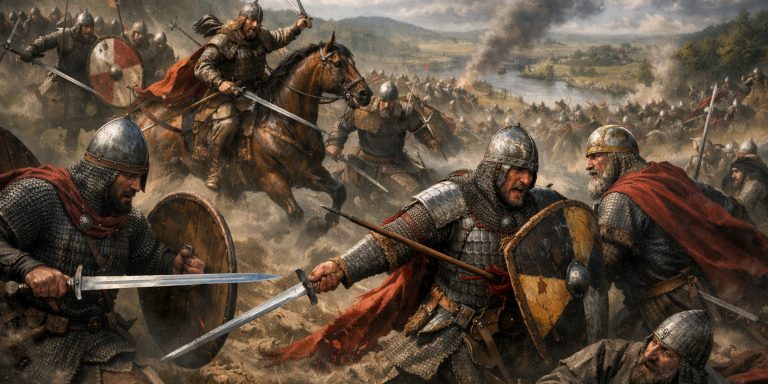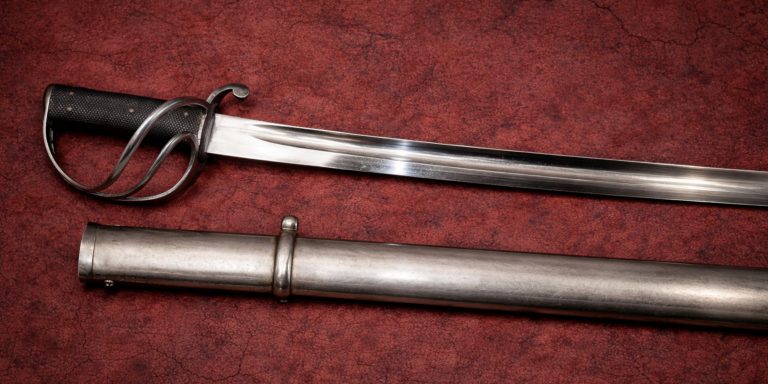
The Battle of Wassy was less a battle than a massacre, but it marked the bloody ignition of France’s long and agonising Wars of Religion. On 1 March 1562, the Duke of Guise and his armed entourage attacked a group of Huguenots worshipping in the small town of Wassy (now Wassy-sur-Blaise), an incident that turned simmering tension into open civil war. The brutality of what happened that morning still echoes as one of history’s cruel ironies: a Catholic duke returning from Mass slaughtering those accused of heresy for the same devotion.
Background
France in the mid-sixteenth century was a powder keg. Protestantism, spreading under the influence of Calvinism, had drawn converts from nobles and merchants alike, unsettling the old Catholic order. Catherine de’ Medici’s attempt to mediate through the Edict of January 1562, which permitted limited Protestant worship outside towns, was meant to keep the peace.
The Duke of Guise, staunchly Catholic and proud to be so, considered the edict a personal insult. On his journey to Paris, he stopped in Wassy, where reports reached him of an illegal Protestant gathering in a barn. His decision to “inspect” the scene was no inspection at all, it was an assault that left more than fifty men, women, and children dead.
As one Protestant pamphlet grimly noted, “The barn ran with Christian blood, and the cries rose higher than the church bells.”
Forces
Though not an organised battle in the formal sense, Wassy involved armed retainers and militia.
| Faction | Estimated Strength | Composition | Commanders |
|---|---|---|---|
| Catholic (House of Guise) | c. 200 men-at-arms | Mounted nobles, household guards, and local militia | François, Duke of Guise |
| Huguenot Worshippers | c. 500 civilians | Small number of armed men for protection, untrained townsfolk | None (local congregation leader unnamed) |
The imbalance was catastrophic. The Huguenots were neither prepared nor positioned to fight; they were cornered and slaughtered.
Arms and Armour
The Guise troops represented the armed nobility of France in miniature:
- Weapons:
- Cavalry swords such as the espée de guerre, long straight-bladed and suited for cutting and thrusting.
- Arquebuses and crossbows, used to fire into the barn’s open windows.
- Halberds and pikes, wielded by foot guards for close work.
- Armour:
- Plate cuirasses and morion helmets among Guise’s personal guards.
- Light brigandine and mail for retainers.
- The Huguenots, largely unarmed, carried walking sticks and a few short swords or daggers, hardly a defence.
The violence was not strategic warfare but punishment cloaked in piety.
Leaders and Troop Composition
| Leader | Allegiance | Notes |
|---|---|---|
| François, Duke of Guise | Catholic | Military veteran of Metz and Calais, saw himself as defender of the true faith. |
| Louis de Bourbon, Prince of Condé | Huguenot (absent) | Later used the massacre to rally Protestant forces under his banner. |
| Catherine de’ Medici | Politically neutral (nominally Catholic) | Attempted to mediate peace after the massacre, but the damage was done. |
Archaeology and Evidence
Little remains of the original barn, but archaeological surveys in the Wassy area have uncovered:
- Fragments of arquebus shot embedded in wooden beams, likely from the incident.
- Burned remains consistent with fire damage from the assault.
- Excavated coinage and devotional medallions, some with Calvinist inscriptions, revealing the economic and religious status of the victims.
The site today is marked by a memorial chapel, where the name Massacre de Wassy is preserved with understated French melancholy.
Battle Timeline
| Date | Event |
|---|---|
| Morning, 1 March 1562 | The Duke of Guise attends Catholic Mass nearby before arriving in Wassy. |
| Midday | Reports reach Guise of Protestant worship at a barn outside town. |
| Early Afternoon | Guise and his men approach, demand the crowd disperse. A scuffle breaks out. |
| Moments Later | The Duke’s guards open fire and charge. Over 50 Huguenots are killed, 100 wounded. |
| Following Days | News spreads across France. Condé and Coligny raise forces in retaliation. |
| April 1562 | The First War of Religion formally begins with open conflict. |
Contemporary Quotes
“It was not battle but butchery, a communion of blood where faith was the excuse and fury the sacrament.” – Anonymous Huguenot survivor, 1562
“I came not to shed blood, but to restore order.” – François, Duke of Guise (reported justification to the royal council)
Aftermath and Legacy
The massacre at Wassy turned France’s religious fracture into a war that would last for nearly forty years. It cemented the Guise family’s reputation as champions of militant Catholicism and pushed the Huguenots into militarised resistance under Condé and Admiral Coligny.
From a historian’s perspective, Wassy is the point at which words failed and swords took over. It was the beginning of a generation’s torment, a conflict where neither side prayed for peace sincerely enough to stop fighting.
Even now, walking through Wassy’s quiet streets, you can almost hear the echoes, perhaps not of battle, but of the moment France lost the illusion of unity.
Watch the documentary:



